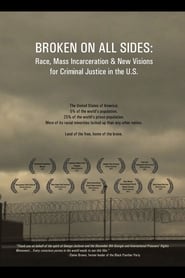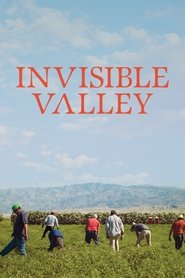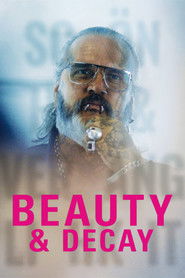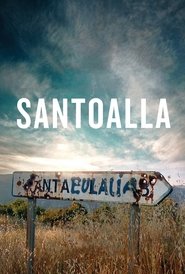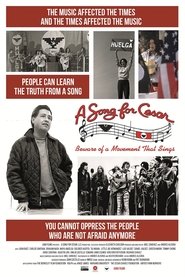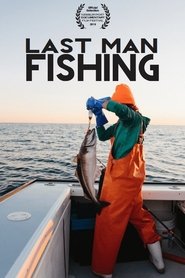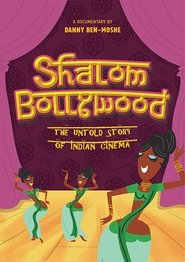Popular Documentary Movies on Kanopy - Page 223
-
The Reluctant Radical
2018
star 6.8A heartbreaking and heartwarming story of long-time environmentalist and activist Ken Ward. -
Life with Murder
2010
Life with Murder
2010
star 6.2Chatham, Ontario, 1998. Eighteen-year-old Jennifer Jenkins is brutally shot to death by multiple rifle rounds in her family home. The main suspect: her brother, Mason Jenkins, who fled the scene of the crime. -
Grass: A Nation's Battle for Life
1925
star 7.7A silent documentary which follows a branch of the Bakhtiari tribe of Persia as they and their herds make their epic seasonal journey to better pastures. -
The Two Faces of a Bamileke Woman
2018
star 6The return of a young filmmaker to her home country, Cameroon, and her reunion with her mother. -
Taking Root: The Vision of Wangari Maathai
2008
star 6.2This documentary provides a window into the extraordinary life of activist and Nobel Laureate Wangari Maathai, a Kenyan woman who has worked to regain ownership of her country and its fate after years of colonialism. While gentle and thoughtful, Maathai carries a powerful message: the First World holds much of the responsibility for the environmental, economic and social struggles of the developing world. -
Broken on All Sides
2012
Broken on All Sides
2012
The project began as a way to explore, educate about, and advocate change around the overcrowding in the Philadelphia jail system. It has come to focus on mass incarceration across the nation and the intersection of race, poverty, and the criminal justice and penal systems. The documentary centers around Michelle Alexander's theory in her book, The New Jim Crow: since the rise of the drug war and explosion of prison populations, because discretion within the system allows for prosecution of people of color at disproportionately high rates, mass incarceration is a new version of Jim Crow. The movie also dissects the War on Drugs and 'tough on crime' movement, and offers possible reforms and solutions to ending mass incarceration and this new racial caste system. -
Wasted! The Story of Food Waste
2017
star 6.9See how the world’s most influential chefs battle food waste through the eyes of chef-heroes like Massimo Bottura, Dan Barber and Danny Bowien. -
The VP Choice: Vance vs. Walz
2024
FRONTLINE investigates the lives and views of Sen. JD Vance and Gov. Tim Walz as they run for vice president. Drawing on interviews with those who know Vance and Walz well — friends, advisors, journalists and political insiders — the documentary traces how these two men from the middle of America found their opposing political voices and explores the ideas and influences they would bring to the White House. -
Buying Sex
2013
Buying Sex
2013
star 6.4Timely and wise, this feature documentary explores the state of prostitution laws in Canada. Buying Sex captures the complexity of the issue by listening to the frequently conflicting voices of sex workers, policy-makers, lawyers and even the male buyers who make their claim for why prostitution is good for society. Examining the realities in Sweden and New Zealand, and respecting the differences of ideology as Canada works its way toward an uneasy consensus, the film challenges us to think for ourselves and offers a gripping and invaluable account of just what is at stake for all of us. -
His Parents
2024
His Parents
2024
star 7.3The story of a couple whose child became a serial killer, convicted for 87 murders. Can they still love their son in the face of this unforgivable guilt? Can parents ever truly stop loving their child? -
Invisible Valley
2021
Invisible Valley
2021
Documentary profiles the lives of people who live in California's Coachella Valley. -
Beauty & Decay
2019
Beauty & Decay
2019
Sven Marquardt might be the most famous bouncer worldwide. But beside standing in front of the legendary techno club Berghain in Berlin, he is also a well-known and skilled photographer. Long before the Berlin Wall came down, Marquardt portrayed the subcultural East-Berlin scene. His black and white photography illustrates it as voluptuous, laid-back, dirty and existential. Even if shot by daylight, his work is permeated by darkness, ecstasy and night. -
Santoalla
2016
Santoalla
2016
star 7.1A Dutch couple, Martin and Margo Verfondern, move to a remote Spanish village of Santoalla to start a new life. There is conflict with the Spanish residents resulting in the disappearance of Martin. -
WBCN and the American Revolution
2019
star 5The amazing untold story of the radical underground radio station WBCN-FM set against the profound social, political and cultural changes of the late-1960s and early-70s, using the actual sights, sounds and stories of those who connected through the station, exploding music and countercultural scenes, militant anti-war and civil rights protests and emerging women’s and LGBTQ-liberation movements. -
A Song for Cesar: Beware a Movement That Sings
2021
Song for Cesar is a documentary film with a unique view of the life and legacy of Cesar Chavez and the farmworker movement. The film tells a previously untold story about the musicians and artists who dedicated their time, creativity and even reputations to peacefully advance Cesar Chavez's movement to gain equality and justice for America's suffering farmworkers. -
Last Man Fishing
2019
Last Man Fishing
2019
LAST MAN FISHING is a cinematic look at the vastly changing seafood system through the lens of small-scale fishermen across the United States. Narrated by best-selling author Mark Bittman, the film explores the dichotomy between the industrial model and sustainable fishing methods that focus on conservation and quality. -
Private Violence
2014
Private Violence
2014
star 6.5One in four women experience violence in their homes. Have you ever asked, “Why doesn't she just leave?” Private Violence shatters the brutality of our logic and intimately reveals the stories of two women: Deanna Walters, who transforms from victim to survivor, and Kit Gruelle, who advocates for justice. -
Informant
2013
Informant
2013
star 5.3Vilified by some and venerated by others as the FBI informant largely responsible for the imprisonment of two youths following the 2008 Republican National Convention, Darby was once a charismatic activist mythologized by the American Left for his daredevil aid work in New Orleans’ Ninth Ward in the aftermath of Hurricane Katrina. Informant meticulously constructs a portrait of his life—before and after the death threats—through intimate interviews with Darby and tense reenactments starring the man himself. -
Poisoned Lives: Secrets of the Chemical Industry
2016
For decades, their factories secretly dumped toxic products into rivers, groundwater systems and soil. This pollution affected thousands, causing disabilities, cancers and death. -
Shalom Bollywood: The Untold Story of Indian Cinema
2017
star 5The unlikely story of the 2000-year-old Indian Jewish community and its formative place in shaping the world's largest film industry.
 Netflix
Netflix
 Amazon Prime Video
Amazon Prime Video
 Apple iTunes
Apple iTunes
 Apple TV Plus
Apple TV Plus
 Disney Plus
Disney Plus
 Google Play Movies
Google Play Movies
 Paramount Plus
Paramount Plus
 Hulu
Hulu
 HBO Max
HBO Max
 YouTube
YouTube
 fuboTV
fuboTV
 Peacock
Peacock
 Peacock Premium
Peacock Premium
 Amazon Video
Amazon Video
 The Roku Channel
The Roku Channel
 AMC+
AMC+
 Kocowa
Kocowa
 Hoopla
Hoopla
 The CW
The CW
 Vudu
Vudu
 Starz
Starz
 Showtime
Showtime
 PBS
PBS
 Pantaflix
Pantaflix
 FXNow
FXNow
 Tubi TV
Tubi TV
 Kanopy
Kanopy
 Comedy Central
Comedy Central
 Crunchyroll
Crunchyroll
 Microsoft Store
Microsoft Store
 Redbox
Redbox
 Sun Nxt
Sun Nxt
 ABC
ABC
 DIRECTV
DIRECTV
 Crackle
Crackle
 Fandor
Fandor
 Plex
Plex





